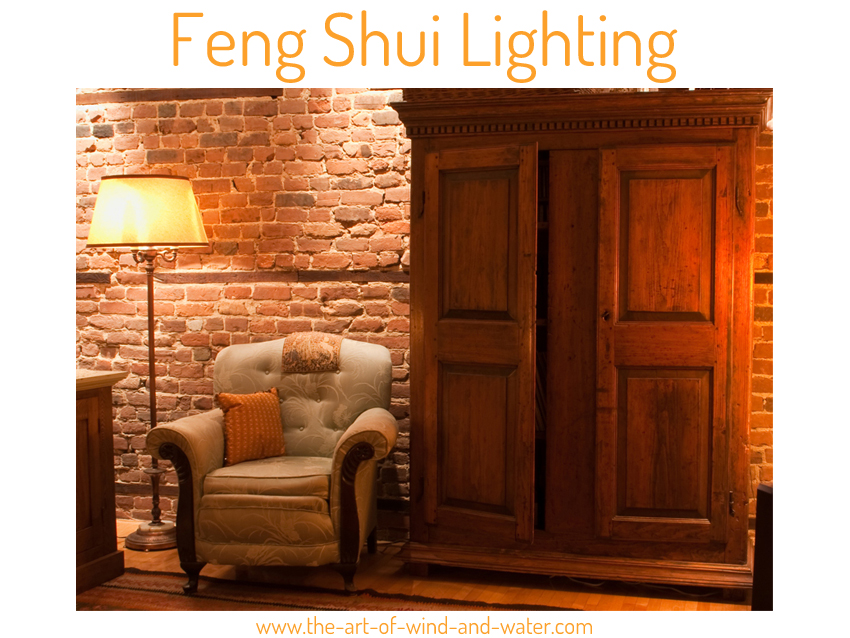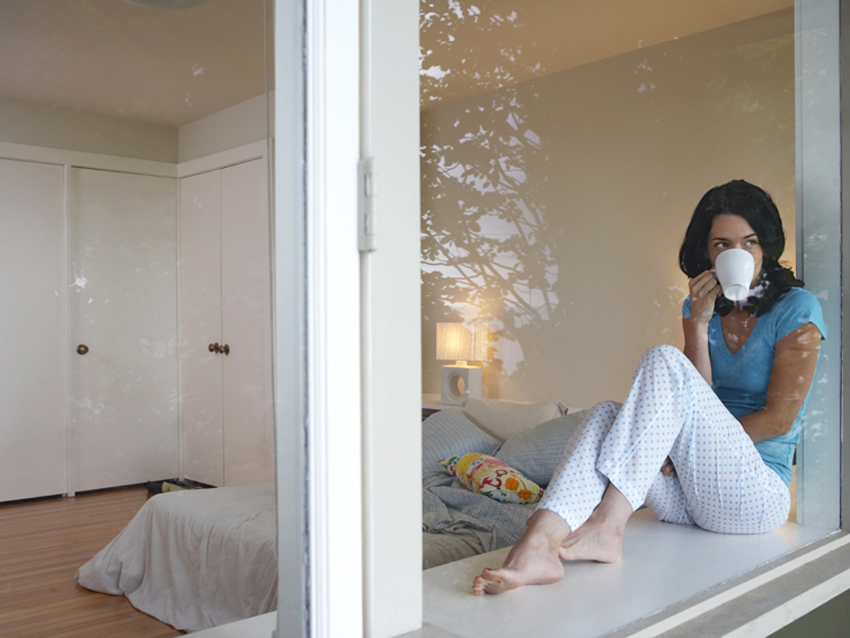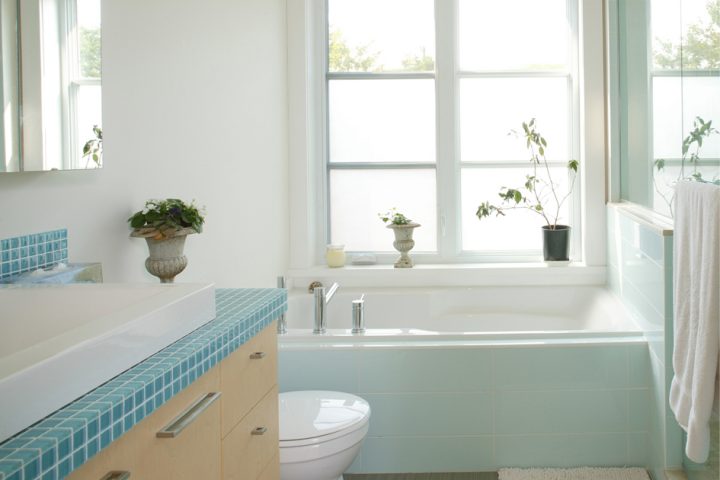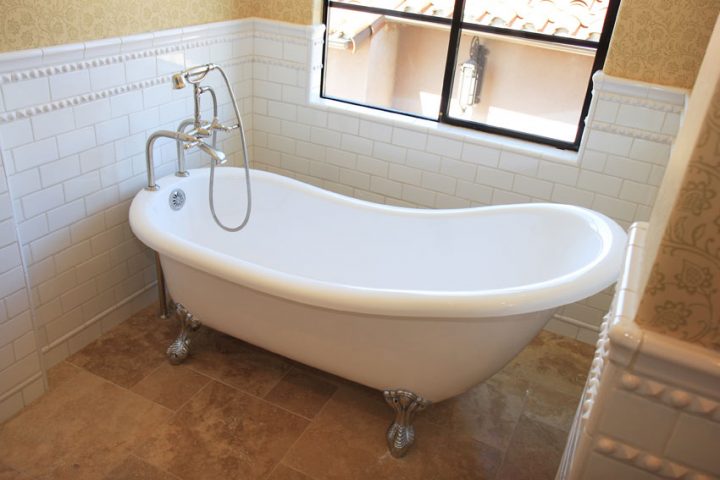
Feng Shui Lighting
Lighting in Feng Shui contrary to popular belief is just good design sense.
ARTIFICIAL LIGHTING
Lighting in the home should illuminate, for safety, comfort and wellbeing. Areas within the home that are poorly lit or with basic lighting design will not create a comfortable space to live in.
Often I have seen homes with single bare bulbs in the ceiling that are the only light in a room, which is basic and incomplete. This type of lighting may lead to lethargy, headaches and fatigue as the amount of light is in-adequate, and the lack of shade does not protect your eyes from glare. A single bulb like this doesn’t create a supportive or comfortable environment. The occupants may have trouble relaxing, feel ungrounded and restless.
Generally each room should have a source of background light such as a pendant, downlighters or uplighters and task lighting depending on the activity. Lamp shades are important to shield your eyes from glare and to soften reflections and diffuse light around the room. Decorative lighting can then be added in as needed whether kinetic (live fire) or artificial. The lighting in each room needs to be planned in detail considering the main function, temporary activities, single occupant activity and multiple occupant activity.

NATURAL DAYLIGHT IDEAS
Where do you live?
Depending on your location in the world, the levels of natural daylight will be affected by the season, climate, day and time. In Northern Europe you will be used to dark winters, lots of cloud cover and rain which all restrict the amount of natural sunlight my home receives, with the amount of sunlight changing through the seasons.
The winter solstice sees the sun rising at 8.30am and setting at 3.30pm at a maximum height of around 10-12 degrees above the horizon. This gives little natural light at a low intensity. Compare this with the summer solstice where the sun rises at 4.30am and sets at 9.30pm at a maximum height of around 50-60 degrees above the horizon. Ideal conditions! It would be unrealistic to rely entirely on natural lighting in this situation, however you can make the most of natural lighting in your home.
Building orientation
The way you property faces is important when thinking about how to use natural light.
North - Areas that are exposed to the North will not receive direct sunlight, however windows will receive low levels of light throughout the day. This applies to North East and North West. Although the percentage of light receives is a little more. Windows are usually smaller and doors and openings are kept to a minimum.
South – Sunlight that falls on these areas and surfaces receive the most natural light. This also applies to South East and South West areas. Although the percentage of light received is less. Areas facing directly South, this is the only direction that will receive natural light throughout the year. This is the best location for any solar panels, windows, doors and openings.
East & West – The East areas receive light as the sun rises in the morning and West areas receive light as the sun begins to set in the afternoon.
Window location
To receive the most sunlight your windows should be positioned on the South walls. There are several factors to consider with windows. To receive the most amount of natural light into your home, having a number of smaller sized windows as opposed to one or two large sized windows is more effective. The position of the windows will affect the light that enters your home. The higher the window the farther back direct sunlight will reach in the room.
Central positions are preferable as if a window is in the corner or near to a wall some of the light can be lost. Lastly think about the shape of your window, are they rectangle, oval, square, broad, narrow etc. Each window allows different levels of light through at different times of day and different times of year. An example is that in the winter the sun is much lower to the horizon. To make the most of sunlight during the winter vertical windows on a South facing wall would help bring natural light into your interior.
Skylights
Skylights and in particular tubular skylights can add well needed natural light exposure to rooms beneath your roof. Traditional skylights have some disadvantages as they allow direct sunlight through to the furniture and furnishings below which can cause UV damage as well as causing glare and they can also contribute to heat loss. Tubular skylights consist of various parts from the roof down to the ceiling. The tube draws natural sunlight through with its reflective surface and disperses the light through a lens that is also a diffuser in the ceiling. The fitting is similar to a typical ceiling light and allows natural light to be evenly distributed around your room.
They are also less expensive than traditional skylights, do not require structural alterations and do not allow as much heat to escape. Perfect for rooms like walk in wardrobes and bathrooms that do not have any windows or natural light. There are some disadvantages; longer tubes don’t allow the maximum amount of light to enter into the interior and they can only be used in rooms beneath the roof.
Decorating
The interior colour scheme can have an effect on how light or bright your room appears. Lighter colours on the walls and surfaces will reflect more natural light around your interior. Window dressings such as curtains and blinds can also have an effect.
You may have heavy curtains that even when pulled back may block some natural light. Opt for simple, light weight translucent fabrics that can reveal the whole window when opened. Keep curtains and blinds open during the day to allow as much direct light in as possible. For privacy use lightweight net curtains, these may block some natural light, however are better than closing the curtains. Mirrors can help reflect light around a room, but can also cause glare if positioned in the direct path of sunlight.



